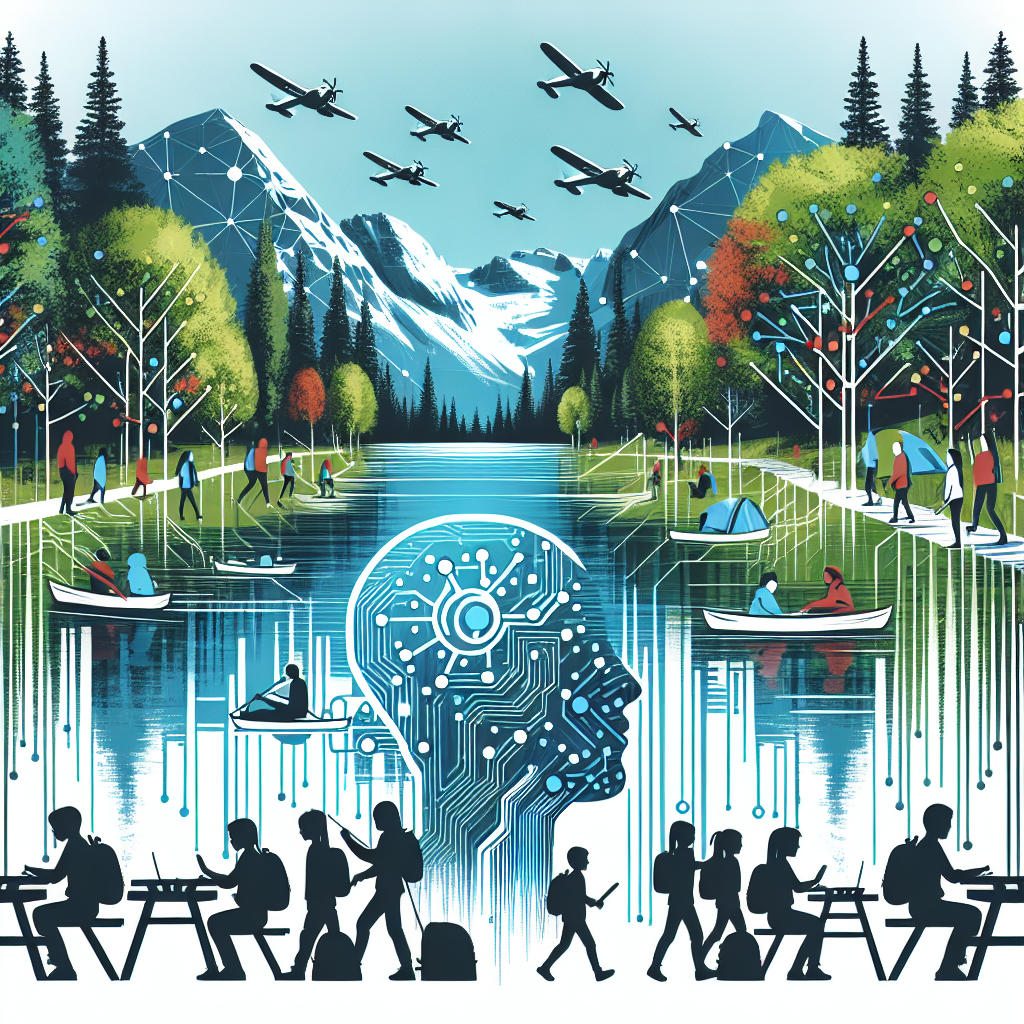In recent years, there has been a growing interest in using artificial intelligence (AI) in outdoor education to enhance students’ experiences and connect them with nature and the environment. AI has the potential to revolutionize outdoor education by providing personalized learning experiences, real-time feedback, and access to a wealth of information about the natural world. In this article, we will explore the benefits of using AI in outdoor education, discuss some of the ways it can be implemented, and address common questions and concerns about this emerging technology.
Benefits of AI in Outdoor Education
1. Personalized Learning Experiences: AI can analyze students’ learning styles, preferences, and abilities to create personalized lesson plans and activities. This allows educators to tailor the outdoor learning experience to meet the needs of each individual student, maximizing their engagement and understanding of the natural world.
2. Real-Time Feedback: AI can provide students with instant feedback on their performance, helping them to track their progress and make adjustments as needed. This immediate feedback can enhance the learning process and motivate students to improve their skills and knowledge.
3. Access to Information: AI can provide students with access to a wealth of information about the environment, wildlife, plants, and ecosystems they are exploring. This information can help students to deepen their understanding of the natural world and make connections between different aspects of nature.
4. Enhancing Safety: AI can help educators to monitor students’ safety during outdoor activities, providing real-time alerts and notifications in case of emergencies or dangerous situations. This can give both students and educators peace of mind and ensure that outdoor learning experiences are conducted in a safe and responsible manner.
Ways to Implement AI in Outdoor Education
1. Virtual Field Trips: AI can be used to create virtual field trips that allow students to explore different natural environments and ecosystems from the comfort of their classroom. These virtual experiences can be enhanced with interactive elements, such as quizzes, videos, and simulations, to engage students and deepen their understanding of the natural world.
2. Wildlife Identification: AI-powered apps and tools can help students to identify different species of wildlife, plants, and insects they encounter during outdoor activities. By using image recognition technology, students can take photos of the plants or animals they find and receive instant information about them, including their name, habitat, and behavior.
3. Environmental Monitoring: AI can be used to monitor environmental conditions, such as air quality, water pollution, and temperature, in real-time. This data can be used to teach students about the impact of human activities on the environment and inspire them to take action to protect and preserve natural resources.
4. Gamification: AI-powered games and simulations can make outdoor education more engaging and interactive for students. By incorporating elements of competition, teamwork, and exploration, these games can motivate students to learn about nature and the environment in a fun and engaging way.
FAQs about AI in Outdoor Education
Q: Will AI replace traditional outdoor education experiences?
A: AI is meant to enhance, not replace, traditional outdoor education experiences. While AI can provide valuable support and resources for educators and students, it is important to maintain the hands-on, experiential learning opportunities that outdoor education offers.
Q: How can educators integrate AI into their outdoor education programs?
A: Educators can start by exploring AI-powered tools, apps, and platforms that are specifically designed for outdoor education. They can also collaborate with AI experts and researchers to develop custom solutions that meet the unique needs of their students and curriculum.
Q: Is AI safe for students to use in outdoor settings?
A: When used responsibly and ethically, AI can be a safe and valuable tool for students in outdoor settings. Educators should ensure that students are properly trained on how to use AI tools and that privacy and security measures are in place to protect students’ data and information.
Q: How can AI promote equity and inclusion in outdoor education?
A: AI can help to address disparities in access to outdoor education by providing personalized learning experiences for students from diverse backgrounds and abilities. By tailoring lessons and activities to meet the needs of each individual student, AI can promote equity and inclusion in outdoor education.
In conclusion, AI has the potential to revolutionize outdoor education by providing personalized learning experiences, real-time feedback, and access to a wealth of information about the natural world. By integrating AI into outdoor education programs, educators can enhance students’ experiences, inspire a love of nature and the environment, and empower them to become responsible stewards of the planet. As AI continues to evolve and improve, the possibilities for using this technology in outdoor education are endless, promising a brighter future for both students and the natural world.

